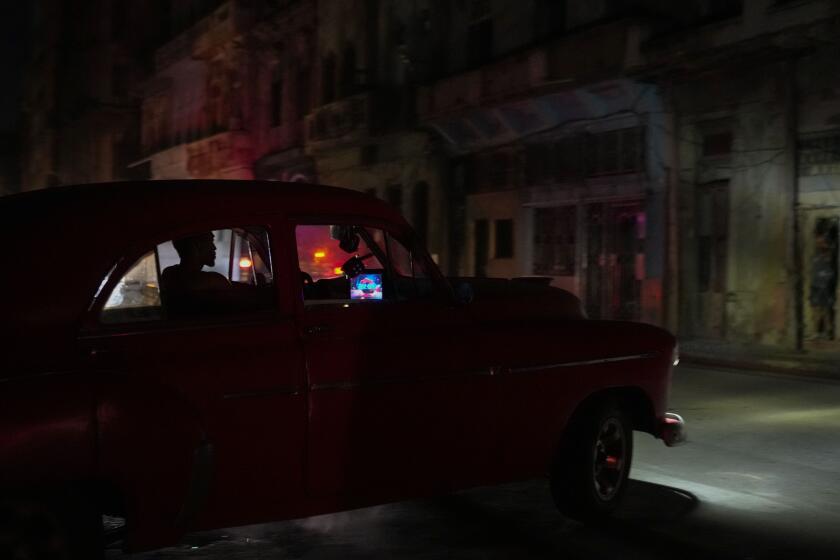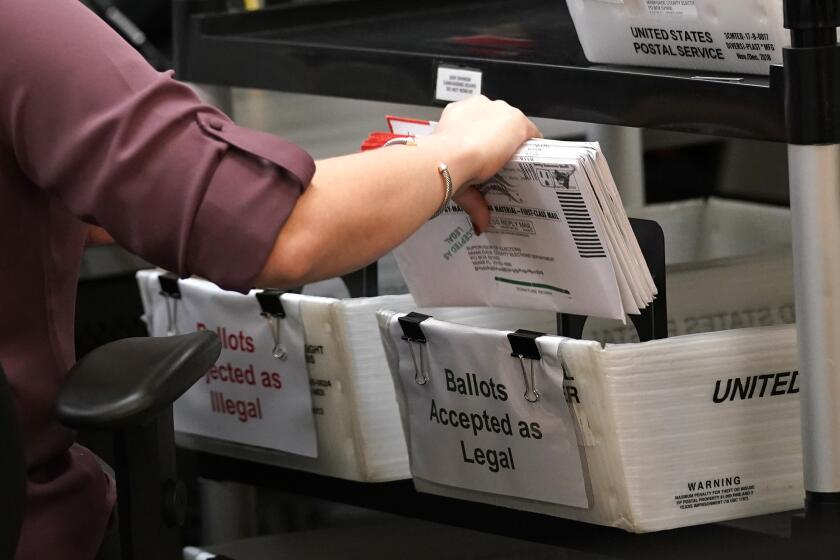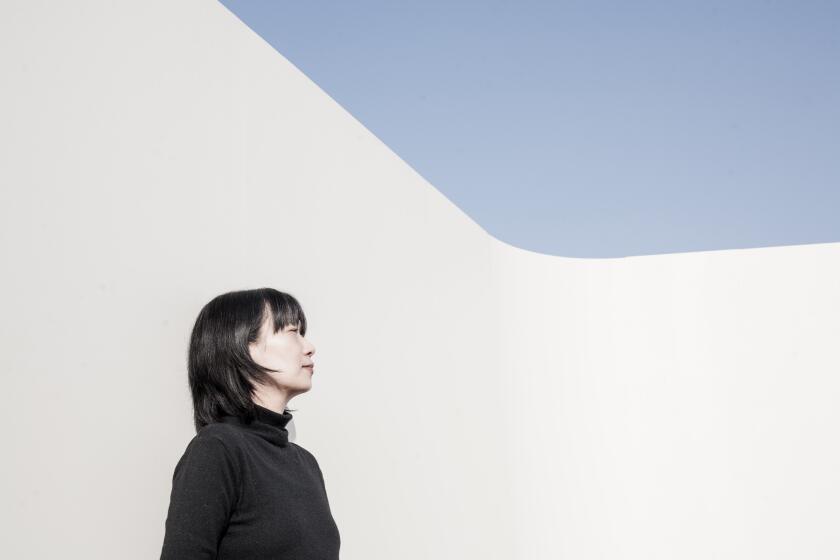Egypt’s Royal Pharaonic Mummies to Go Back on Display--This Time, in Dignity
Ancient royal mummies are going on public view for the first time since then-President Anwar Sadat ordered them put behind locked doors seven years ago because he believed that gawking tourists violated the dignity of the dead.
Starting in October, visitors to the Egyptian Museum will be allowed to look at the remains of Pharaoh Ramses II, among the grandest monarchs of the 25 centuries of Pharaonic Egypt, and of 14 other kings, queens and princesses.
They will be displayed in a renovated museum chamber across a hallway from the fabulous treasures of the boy Pharaoh Tutankhamen--King Tut.
Only 27 Mummies Survived
Although hundreds of mummies of ordinary people have been excavated, only 27 royal mummies dating from 3,000 to 3,800 years ago survived tomb raids by ancient-treasure seekers. They were discovered in a common tomb in 1881 across the Nile River from the southern city of Luxor, where ancient priests had hidden them from grave robbers.
The royal remains were on display from 1958 until 1980, when Sadat decided during a visit to the museum that the display of royal remains violated religious concepts and desecrated the dead.
“Sadat was right in stopping their display under those conditions, which were bad and undignified,” said Ahmed Kadry, head of the government’s Egyptian Antiquities Organization, “but he had no right to forbid their display forever.
“Tourists and Egyptology lovers have the right to see an important part of ancient Egyptian life, the fascinating mummification process.”
Delicate Maneuvering
The offhand decision by Sadat, who was assassinated a year later by Islamic fundamentalists, never was put on paper as an official presidential order. Nevertheless, antiquities officials, speaking privately, said the decision to open the mummies again to the public required delicate political maneuvering.
The problem, they indicated, was to construct the decision so that it would not be seen as an aspersion on the assassinated president’s prestige or judgment, yet to show that it was not wrong to reopen the doors on the mummies.
Kadry, who did not head the antiquities organization when Sadat closed the mummy room, said a new chamber is being prepared in the 85-year-old Egyptian Museum off Liberation Square in downtown Cairo.
“They have to be displayed in a refined way that maintains their dignity,” he said, adding that the new display conditions will include scientific controls to stop disintegration of the fragile mummies, some of which are badly deteriorated.
Kept in Glass Containers
The mummy of Ramses himself was taken to France in the 1970s for treatment of a fungus condition that threatened its ruin.
The new display hall will have dim lighting and a ceiling of gold stars in a deep blue sky similar to that of the original tombs of ancient Egypt. The mummies will rest in glass containers at controlled temperature and humidity, Kadry said.
“This style of display will ensure their dignity,” he said.
The museum’s director, Mohammed Saleh, said the hall is large enough only for 15 mummies to be shown and that viewing crowds will be restricted to 20 people at a time.
Ramses II, also known as Ramses the Great, whose remaining strands of hair have yellowed from chemicals, remained in an air-conditioned glass box among other Pharaonic artifacts in the museum proper, hidden from view under a blue velvet cover.
Intricate Braids
The other 26 now lie isolated in the original drab beige hall, with stark white neon light glaring down from the high ceiling.
Dark hair remains on the heads of some of the queens and princesses, intricately braided in dozens of long strands.
More to Read
Sign up for Essential California
The most important California stories and recommendations in your inbox every morning.
You may occasionally receive promotional content from the Los Angeles Times.










